Technologies
Samsung Unpacked: Everything You Need to Know About The Galaxy Z Fold 5, Z Flip 5, Watch 6 and More
The new Galaxy Z Fold and Z Flip phones, plus the latest Galaxy Tab and Galaxy Watch, are now official.
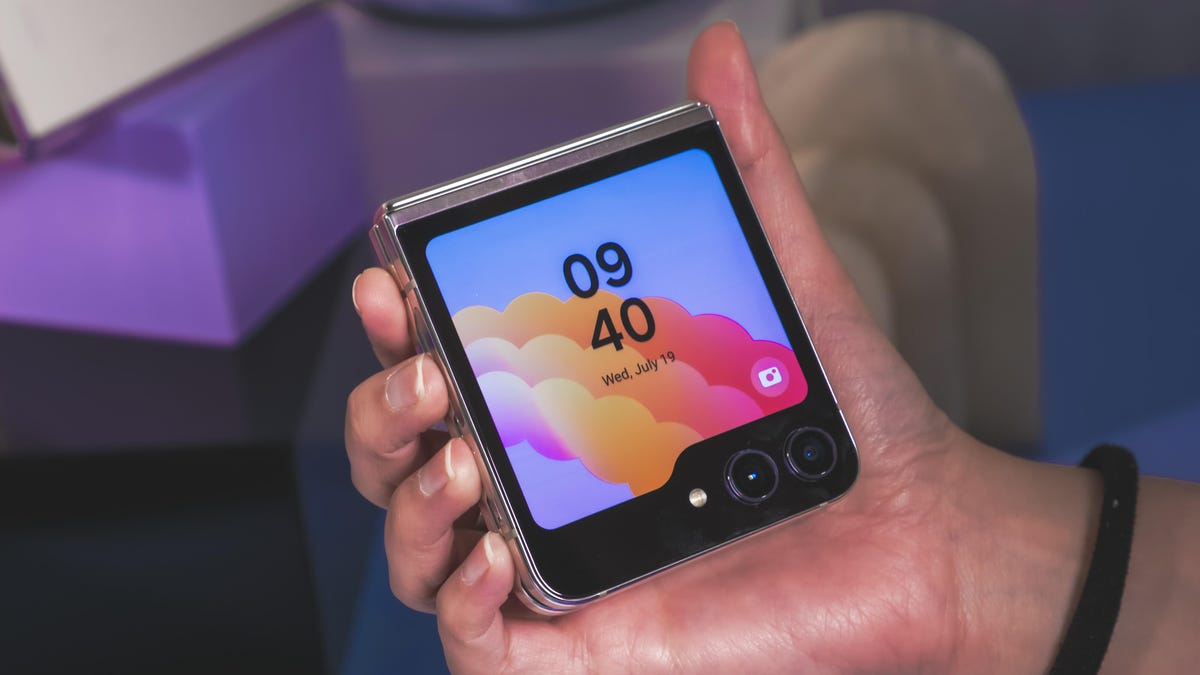
Samsung has taken the wraps off its latest devices. On Wednesday at an event in Seoul, South Korea the electronics giant unveiled a host of new devices including the latest Galaxy Z Fold 5 and Galaxy Z Flip 5 folding phones as well as a new Galaxy Tab S9 and Galaxy Watch 6 (complete with the return of a rotating bezel on the Classic).
The new wave of foldable phones were the focus of today’s Samsung Unpacked event, which was the first to take place in the company’s hometown of Seoul.
While Samsung’s entering its fifth consecutive year in the foldable phone market, the devices it’s launching at this year’s Unpacked arrive among a good deal more competition. Google’s $1,800 Pixel Fold is the first Pixel device to adopt a similar style to the Galaxy Z Fold series, in which a traditionally scaled phone unfolds to reveal an inner tablet-size screen. OnePlus is also rumored to have its own foldable phone on the way, which could further disrupt the space.
And after taking a few years off from the US market, Motorola’s new $1,000 Razr Plus is now eyeing Samsung’s Z Flip series, with the newest entry including a larger cover screen that can run most Android apps. We also know Motorola has a more affordable Razr model on the way with a smaller cover screen.
And it’s not only phones. As with Samsung’s past summer Unpacked events, Wednesday included new watches and tablets with the South Korean tech giant introducing a new Galaxy Watch 6 series and Tab S9 tablet line.
Here’s what you need to know about everything Samsung just unveiled.
Galaxy Z Fold 5: New ‘flex hinge’ closes the gap
The Z Fold 5 remains the pinnacle of Samsung’s folding lineup, though as with recent updates, this year’s model is largely iterative with no major redesign. There are improvements, notably a new «flex hinge» that allows the Z Fold 5 to fold completely closed without a gap around the hinge — a first for Samsung’s larger foldable. Also new is a Qualcomm Snapdragon Gen 2 processor, just like the Galaxy S23 line, a brighter internal display and a thinner S Pen stylus.
Otherwise, the Z Fold 5 looks similar to the Z Fold 4 and Z Fold 3 with the same sized front and internal screens. It still has a «flex mode» for propping the foldable up like a mini laptop, IPX8 water-resistance and a crease that CNET’s Lisa Eadicicco still found to be visible.
Like recent Z Folds, the new Z Fold 5 will start at $1,800 (£1,749, AU£2,599) when it hits stores on Aug. 11.
Galaxy Z Flip 5: A bigger front screen leads the way

Whereas the Z Fold 5 looks largely similar to older Folds, Samsung gave the Z Flip 5 a bit more of a refresh. New for this year’s Flip line is a redesigned front screen, which goes from 1.9-inches to 3.4-inches. The new front screen allows Samsung to better stack up to Motorola’s recently released Razr Plus and its 3.6-inch front display, though the Z Flip front screen is a bit more limited than Motorola’s offering. Samsung only lets certain apps run on the display at launch.
Beyond the updated front display, the new Z Flip 5 similarly runs on Qualcomm’s latest Snapdragon Gen 2 processor and sports a new hinge that also closes completely flat.
What hasn’t changed is the starting price, as the Z Flip 5 will start at the same $999 (£1,049, AU$1,649) that the Z Flip 4 commanded. The new flip phone is set to hit stores on Aug. 11.
Galaxy Watch 6: Return of the (Classic’s) rotating bezel
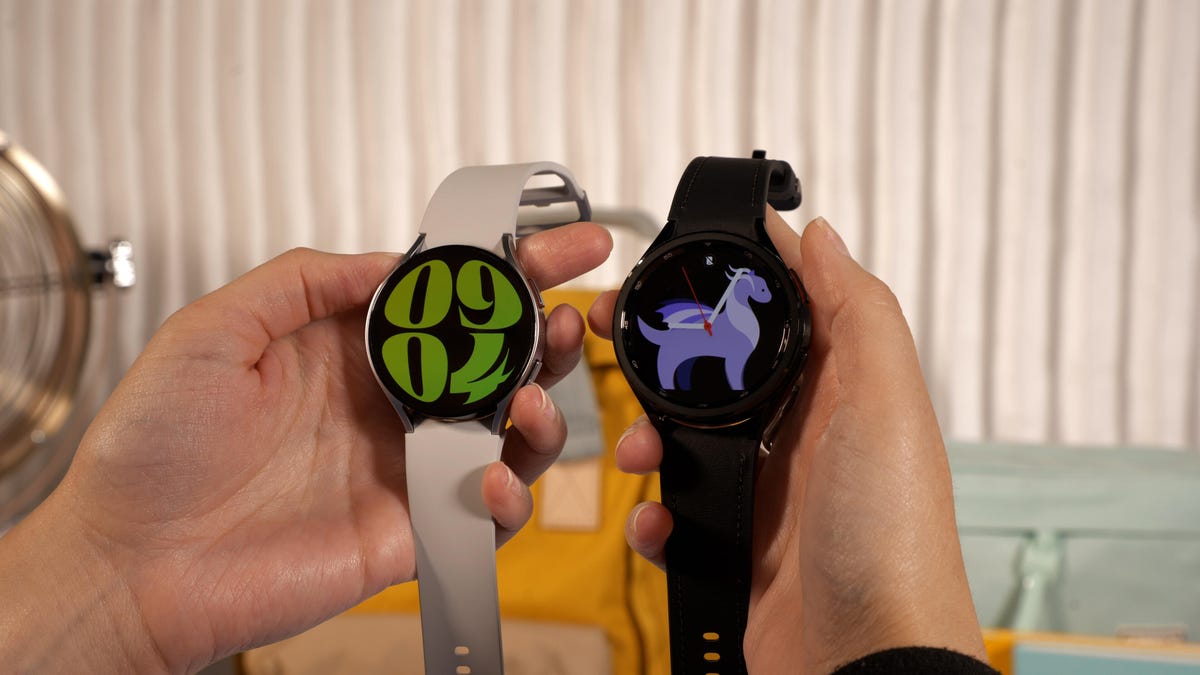
Samsung has given the Galaxy Watch 6 sports bigger batteries, larger screens and, at least on the Classic model, the return of the rotating bezel that was last seen on 2021’s Galaxy Watch 4. We’re glad it’s back as Samsung’s choice to cut it out from the Watch 5 line did not make us happy.
While otherwise largely incremental, the new Watch 6 will come in either 40mm or 44mm varieties (with screens running roughly 1.3 inches and 1.5 inches, respectively) while the Classic will arrive in either 43mm or 47mm sizes (sporting similar display sizes).
On the sensor front, the Watch 6 line sports similar sensors including ones for heart rate, skin temperature and bioimpedance (body composition). Google’s Wear OS continues to run the software side, with Samsung touting that a new app for Gmail was coming to the platform. Samsung’s One UI remains a part of the platform, including for better sleep insights.
The new Watch 6 will similarly go on sale on Aug. 11 and starts at $300 (£289, AU$549) for the smaller 40mm size and $330 (£319, AU$599) for the larger 44mm size, $20 more than the initial prices for the Watch 5. The Watch 6 Classic starts at $400 (£349, AU$699) for the smaller, 43mm model and $430 (£399, AU$749) for the bigger, 47mm size.
Galaxy Tab S9: Now water-resistant
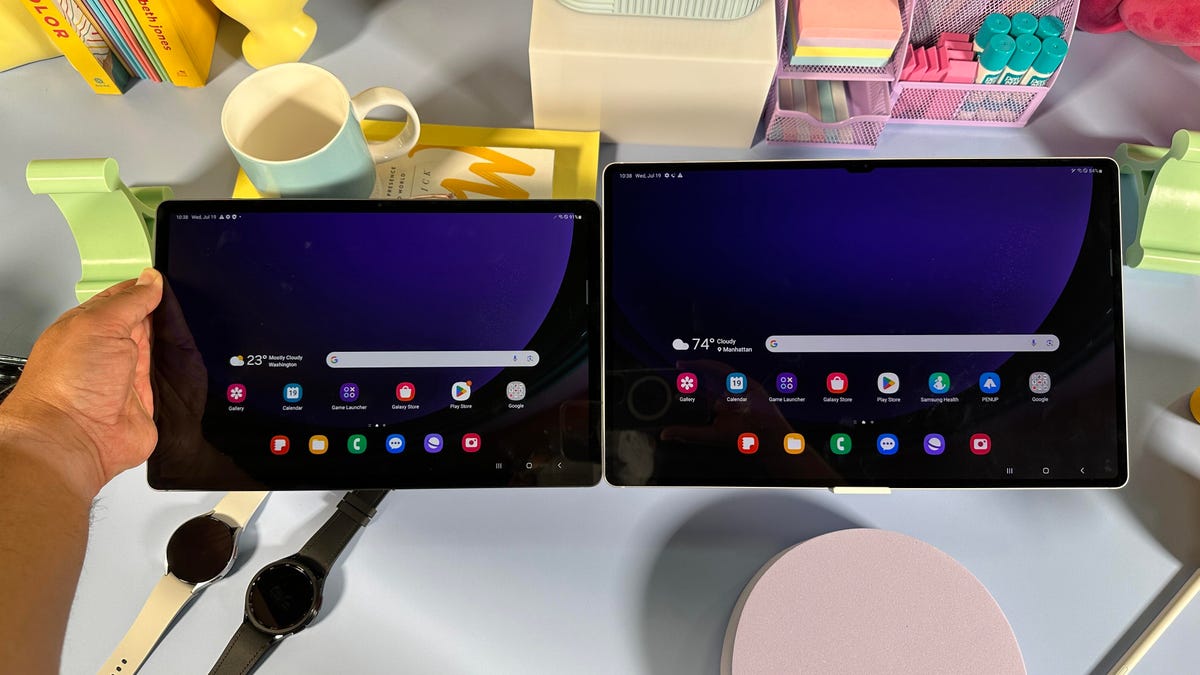
The Galaxy Tab family also got a refresh on Wednesday, with the new Tab S9 line sporting improved Qualcomm Snapdragon Gen 2 processors and IP68-rated water- and dust-resistant designs (for both the tablet and the S Pen stylus), but like Samsung’s other refreshes are largely incremental. You’ll still find large and impressive AMOLED displays across the line, with screen sizes still ranging from 11-inches on the base S9, 12.4-inches on the S9 Plus and 14.6-inches on the S9 Ultra. There also is a new beige color.
Pricing for the tablets remains high: The S9 is $800 (£700, AU$1,299), the S9 Plus is $1,000 (£999, AU$1,699) and the Ultra is $1,200 (£1,199, AU$1,999). And while a keyboard still costs extra, Samsung still includes an S Pen. Like the other devices that Samsung announced, the new tablets will arrive on Aug. 11.
Technologies
The Black Friday Gaming Deals You Want Are Already Here, Including PlayStation, Xbox and Alienware
Technologies
The Black Samsung Galaxy Z Fold 7 Is at a Record $443 Off at Amazon for Black Friday
A Galaxy Z Fold 7 price war between Amazon and Samsung gives us a record-low deal for one color.
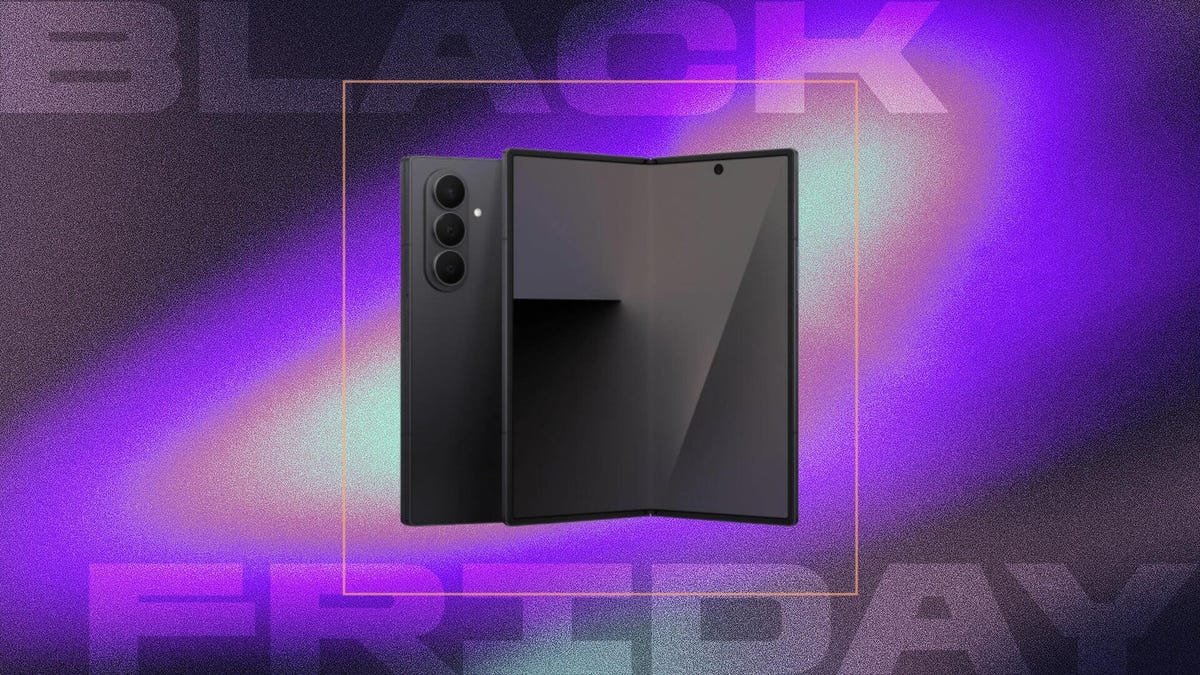
If you’re looking for a foldable iPhone, you’re gonna need to wait until 2026, but if you’re looking for the best foldable phone of 2025, there are great deals on the Galaxy Z Fold 7 right now at both Amazon and Samsung, with the former dropping the black version of Samsung’s foldable phone to a record-low $1,557. All other models are $1,600 at both Amazon and Samsung, a $400 discount.
Samsung’s unique foldable phones had an awkward adolescence, but after getting her hands on the new lineup, CNET reviewer Abrar Al-Heet confirms that the latest Z Fold 7 «just feels right.» For one, it’s incredibly sleek at just 8.9mm thick when closed or 4.2mm thick when open, which is so thin you may even forget that it’s foldable.
Hey, did you know? CNET Deals texts are free, easy and save you money.
Despite weighing just 215 grams, this foldable features some serious hardware. It has a 6.5-inch cover screen and an 8-inch interior display with a fluid 120Hz refresh rate. It’s equipped with a cutting-edge Snapdragon 8 Elite processor and 12GB of RAM to support tons of helpful AI features and functions, and comes with Android 16 and Samsung One UI 8 right out of the box.
The camera system is also pretty impressive, boasting a 200-megapixel rear camera, 12-megapixel ultrawide shooting and a 10-megapixel front camera on both the cover and interior screens. Plus, it’s equipped with a 4,400-mAh battery for all-day use.
MOBILE DEALS OF THE WEEK
-
$749 (save $250)
-
$475 (save $175)
-
$499 (save $300)
-
$900 (save $400)
Why this deal matters
With an unbelievably sleek design and cutting-edge hardware, the impressive Samsung Galaxy Z Fold 7 is our favorite foldable phone on the market. But it also comes with a staggering $2,000 price tag, and if you’re hoping to get your hands on one, this $443 discount is a way to rack up some serious savings and help cushion the blow of its considerable cost. Just be sure to get your order in soon, as we doubt this deal will remain live for long.
Join Our Daily Deals Text Group!
Get hand-picked deals from CNET shopping experts straight to your phone.
By signing up, you confirm you are 16+ and agree to receive recurring marketing messages at the phone number provided. Consent is not a condition of purchase. Reply STOP to unsubscribe. Msg & data rates may apply. View our Privacy Policy and Terms of Use.
Technologies
I Almost Missed This Deal Within a Deal for Baseus’ Bose-Infused Headphones and Earbuds
Baseus’ new Inspire XH1, XP1 and XC1 models with Sound by Bose are 23% to 33% off for Black Friday and Cyber Monday. But Baseus throws in its BC1 clip-on earbuds or other «free» bonus items to make the deal even sweeter.
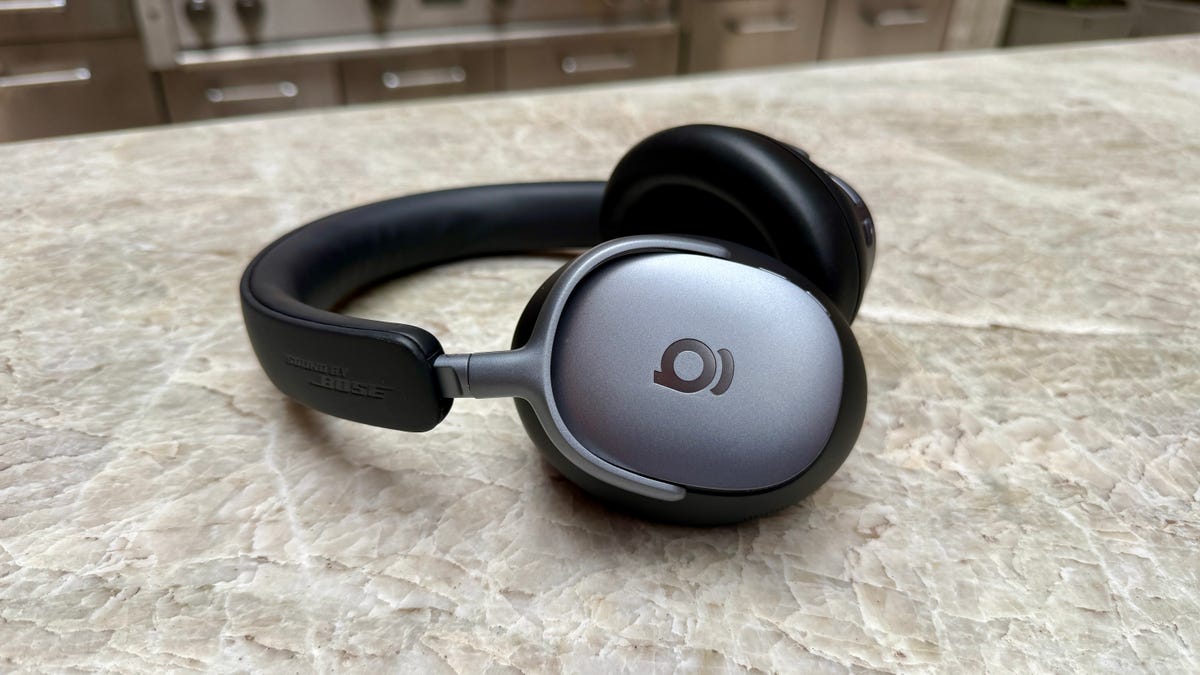
I gave CNET Editors’ Choice awards to Baseus’ Bose-infused Baseus Inspire XH1 headphones and Inspire XP1 earbuds because they’re well designed and sound decent for what they cost. I also liked Baseus’ Inspire XC1 clip-on earbuds, which have dual- drivers and earned a spot on CNET’s best clip-on earbuds list.
Last week all three models were selling for around $110 (though they have higher list prices), but they’re now discounted to around $100 for Black Friday and Cyber Monday. That’s a deal I’d highlight on its own, but if you click through to any of those models’ Amazon product pages an look closely you’ll see that each is eligible for «one free item» with purchase.
Read more: Best wireless earbuds of 2025
You have to click the «how to claim link» and then add one of the three products to the your cart. Once one of the headphones or earbuds is added to your cart, you can click a button on the left side of screen (above the stars for average ratings) that switches the view from «qualifying items» to «benefit items.» You can then add Baseus’s BC1 clip-on earbuds, which list for $40, to your cart as a free item. Baseus’ step-up Basues MC1 Pro ($48 for Black Friday) and Inspire XC1 clip-on buds sound better, but the BC1 are fine for casual use.
If the BC1 earbuds option doesn’t thrill you, there are other freebies you can opt for. Just go back to the Amazon product page for the Inspire XH1, XP1 and XC1 and you’ll see options for one free item with $100, $90, $51 and $46 purchases. The $90 benefit item is a 30W dual-port fast charger (list price $20), which is decent, and the $51 benefit item is a retractable USB-C cable ($19 list) that’s useful. Don’t bother with the $46 benefit item.
You can read my full reviews of the Inspire XH1 headphones here and the Inspire XP1 earbuds here. And here’s my quick take of the Inspire XC1 earbuds:
Like Baseus’ noise-isolating Inspire XP1 earbuds that I rated highly, the Inspire XC1 feature «Sound by Bose» and a more premium design than earlier Baseus earbuds. The XC1 don’t sound as good as the XP1, but they sound good for open earbuds and are equipped with dual drivers, one of which is a Knowles balanced-armature driver that helps improve treble performance. While they don’t produce as much bass as noise-isolating earbuds like the Inspire XP1, their bass performance is better than I expected. The buds’ sound is pretty full, especially in quieter environments, though they do better with less bass-heavy material (I did notice a bit of distortion at higher volumes with certain tracks with harder driving bass).
While I prefer the design and fit of Bose’s Ultra Open Earbuds (as well as the design of their case) and think the Bose buds sound more natural and a tad better overall, the much more affordable Inspire XC1 fit comfortably and offer top-tier sound for clip-on open earbuds (and they play louder than the Bose), as well as decent voice-calling performance with good background noise reduction.
HEADPHONE DEALS OF THE WEEK
-
$248 (save $152)
-
$170 (save $181)
-
$298 (save $131)
-
$199 (save $150)
Read more: Best Black Friday headphones deals
Join Our Daily Deals Text Group!
Get hand-picked deals from CNET shopping experts straight to your phone.
By signing up, you confirm you are 16+ and agree to receive recurring marketing messages at the phone number provided. Consent is not a condition of purchase. Reply STOP to unsubscribe. Msg & data rates may apply. View our Privacy Policy and Terms of Use.
-

 Technologies3 года ago
Technologies3 года agoTech Companies Need to Be Held Accountable for Security, Experts Say
-

 Technologies3 года ago
Technologies3 года agoBest Handheld Game Console in 2023
-

 Technologies3 года ago
Technologies3 года agoTighten Up Your VR Game With the Best Head Straps for Quest 2
-

 Technologies4 года ago
Technologies4 года agoBlack Friday 2021: The best deals on TVs, headphones, kitchenware, and more
-

 Technologies4 года ago
Technologies4 года agoVerum, Wickr and Threema: next generation secured messengers
-

 Technologies4 года ago
Technologies4 года agoGoogle to require vaccinations as Silicon Valley rethinks return-to-office policies
-

 Technologies4 года ago
Technologies4 года agoOlivia Harlan Dekker for Verum Messenger
-

 Technologies4 года ago
Technologies4 года agoiPhone 13 event: How to watch Apple’s big announcement tomorrow
